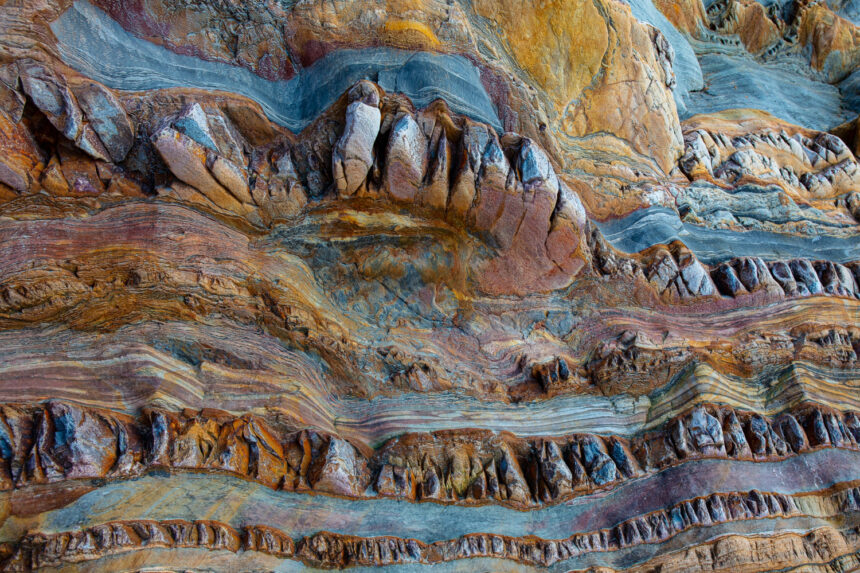Introduction:
Did you know that you’re likely walking on a time machine? The ground beneath your feet might hold fossils of creatures that roamed the Earth millions of years ago. Sedimentary rocks, formed from layers of sand, pebbles, shells, and even ancient bones, are like history books written in stone. These rocks aren’t flashy like gems or fiery like volcanic rocks but hide some incredible facts about sedimentary rocks.
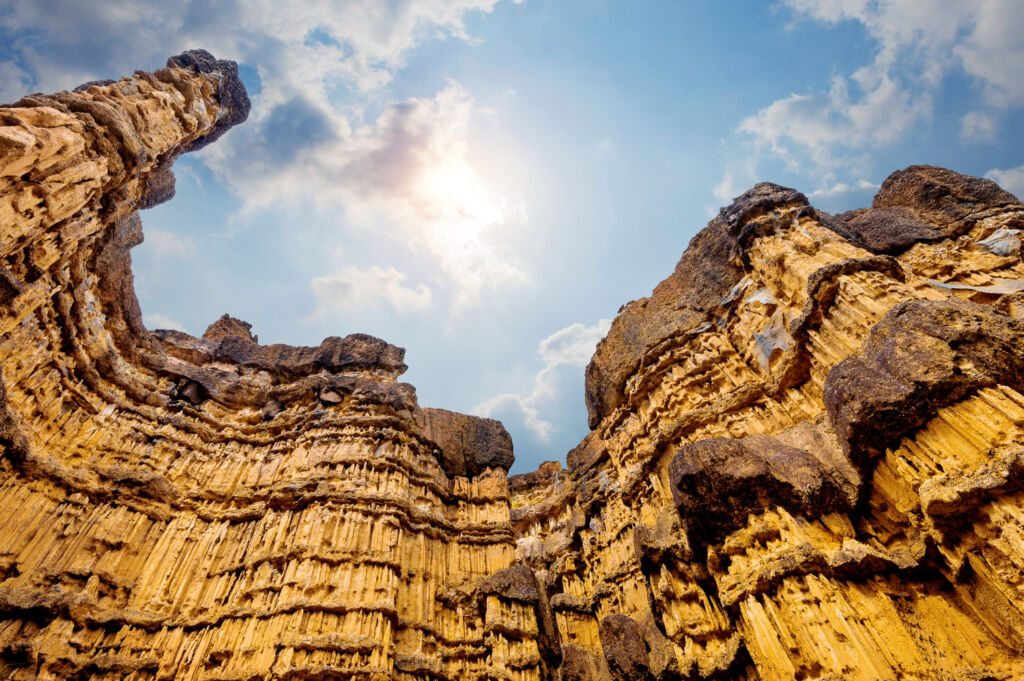
Get ready to uncover the secrets held in these layered wonders. Discover how they reveal past climates, house precious resources, and even hint at life on other planets. Sedimentary rocks might seem ordinary at first glance, but their stories are as extraordinary as time itself. Let’s dive into the fascinating world of these layered storytellers!
What are Sedimentary Rocks?
Sedimentary rocks form from the accumulation and hardening of sediments. Sediments are fragments of pre-existing rocks, minerals, or once-living organisms.
Weathering and erosion break down larger rocks into smaller pieces as they are transported by wind, water, or ice.
Deposition occurs as sediments settle, often in layers, in rivers, lakes, oceans, and deserts.
These layered sediments transform into solid rock through compaction and cementation over thousands or millions of years.
The Importance of Sedimentary Rocks
- Storytellers of the Past: Sedimentary rocks hold fascinating facts about sedimentary rocks, revealing ancient environments, climates, and the evolution of life through fossilized remains.
- Resource Reservoirs: Many essential resources like coal, oil, natural gas, and groundwater are found within sedimentary rock layers.
- Building Blocks: Sedimentary rocks like limestone and sandstone are widely used as building materials throughout history.
- Shaping Landscapes: The unique weathering patterns of sedimentary rocks contribute to the formation of stunning natural landmarks worldwide.
How Sedimentary Rocks are Formed?
Sedimentary rocks tell incredible stories about our planet’s history. They form through a process that spans millions of years, transforming loose particles into solid layers.
1. Weathering and Erosion: Breaking Down the Source
- The starting point: The journey begins with existing rocks – igneous, metamorphic, and even older sedimentary rocks. Natural forces like rain, ice, wind, and temperature changes gradually break these rocks down.
- Facts about sedimentary rocks: This weathering creates sediments, ranging from tiny clay particles to hefty boulders!
2. Transportation: The Journey of Sediments
- Sediments on the move: Rivers, wind, glaciers, and gravity carry the sediments away from their source. As they travel, the particles tumble and become smoother and smaller.
- Fact about sedimentary rocks: The distance sediments travel and how they’re transported influence their characteristics within the final sedimentary rock.
3. Deposition: Settling into Layers
- Coming to rest: When transportation energy lessens (think a river is slowing down), sediments settle out. Heavier pieces sink first, creating the layering seen in sedimentary rocks.
- Fact about sedimentary rocks: These layers hold vital clues about past environments – a sandy layer might indicate an ancient beach, while mud often signifies a calm lakebed.

4. Compaction and Cementation: Solidifying the Rock
- Pressure builds: Over time, layers of sediment accumulate and weigh down on the lower layers. This compresses the sediments together, squeezing out water.
- The final step: Dissolved minerals in the remaining water act like glue, cementing the grains together. This transformation from loose sediment to rock is called lithification.
- Fact about sedimentary rocks: Compaction and cementation can take thousands to millions of years!
Sedimentary rocks are natural time capsules. Studying them offers a glimpse into the Earth’s dynamic history and the powerful forces that shape our world. Learning more facts about sedimentary rocks is a fascinating way to explore the story of our planet.
Types of Sedimentary Rocks
Sedimentary rocks come in a fascinating variety, each formed through different processes and telling a unique part of Earth’s story. Let’s dive into the main types:
1. Clastic Sedimentary Rocks
Clastic rocks are formed from fragments (clasts) of pre-existing rocks. They’re classified according to the size of their grains:
- Coarse-grained: Examples include conglomerate (rounded pebbles) and breccia (angular pebbles)
- Medium-grained: Sandstone, a common building material, falls in this category.
- Fine-grained: Siltstone (slightly gritty) and shale (splits into thin layers).
Clastic rocks often show clues about their origin and the environment in which they formed.
2. Chemical Sedimentary Rocks
These rocks form when dissolved minerals precipitate from water, usually due to evaporation.
- Evaporites: Examples include rock salt (halite) and gypsum (used in drywall).
- Limestone: Composed of calcite, it often forms in marine environments.
Chemical sedimentary rocks can offer information about past water conditions like salinity and temperature.
3. Organic Sedimentary Rocks
Organic sedimentary rocks are primarily formed from the remains of plants and animals.
- Coal: Forms from accumulated plant matter in swampy environments
- Fossiliferous Limestone Formed largely from the shells of marine creatures.
Organic sedimentary rocks are a treasure trove of fossils, providing extraordinary records of ancient life.

It’s important to remember that there can be some overlap between these categories, and many sedimentary rocks are a mixture of different components. Their diverse characteristics tell us incredible stories about the evolution of our planet.
Facts About Sedimentary Rocks: Unveiling Their Secrets
Sedimentary rocks aren’t simply layered stones—they’re a rich archive of Earth’s history, vital treasures, and spectacular natural wonders. Let’s delve into some of the captivating facts about sedimentary rocks.
They Hold Clues to Past Environments
- Time travelers’ tool: The types of sediments, their arrangement, and even ripple marks within sedimentary layers reveal the conditions under which they formed.
- Examples: Sandstone often signifies ancient deserts or beaches, while limestone hints at warm, shallow seas.
- Geologists analyze sedimentary rocks to reconstruct past landscapes, climates, and the evolution of life on Earth.
Fossils: Time Capsules within Sedimentary Layers
- Preservation at its best: Sedimentary rocks are the primary source of fossils. The gentle burial by sediments helps preserve delicate remains of ancient plants, animals, and even their tracks.
- Windows into the past: Fossils offer invaluable insights into the diversity of life throughout Earth’s history and how organisms have changed over time. Famous fossils, from dinosaurs to trilobites, almost always come from sedimentary rock layers.
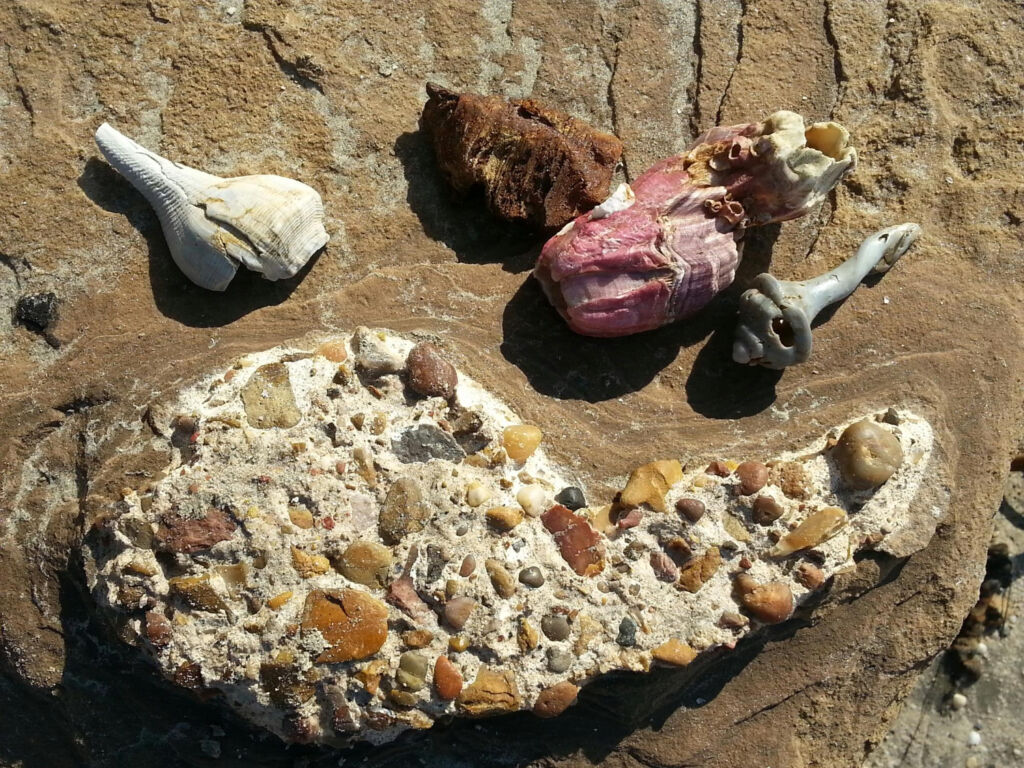
Economic Importance of Sedimentary Rocks
- Energy sources: Coal, a type of sedimentary rock, has fueled industrial revolutions and continues to be an important energy source today.
- Natural reservoirs: Oil and natural gas form within the pore spaces of certain sedimentary rocks, providing us with essential fuels.
- Building materials: Limestone and sandstone have been quarried as reliable and beautiful construction materials for centuries.
- Many of the resources we depend on are found within sedimentary layers.
Famous Sedimentary Rock Formations
- The Grand Canyon (USA): A breathtaking display of sedimentary layers showcasing a vast expanse of geological time.
- White Cliffs of Dover (England): Striking chalk cliffs formed predominantly from the shells of ancient marine organisms.
- Uluru (Australia): An iconic sandstone monolith with geological and cultural significance.
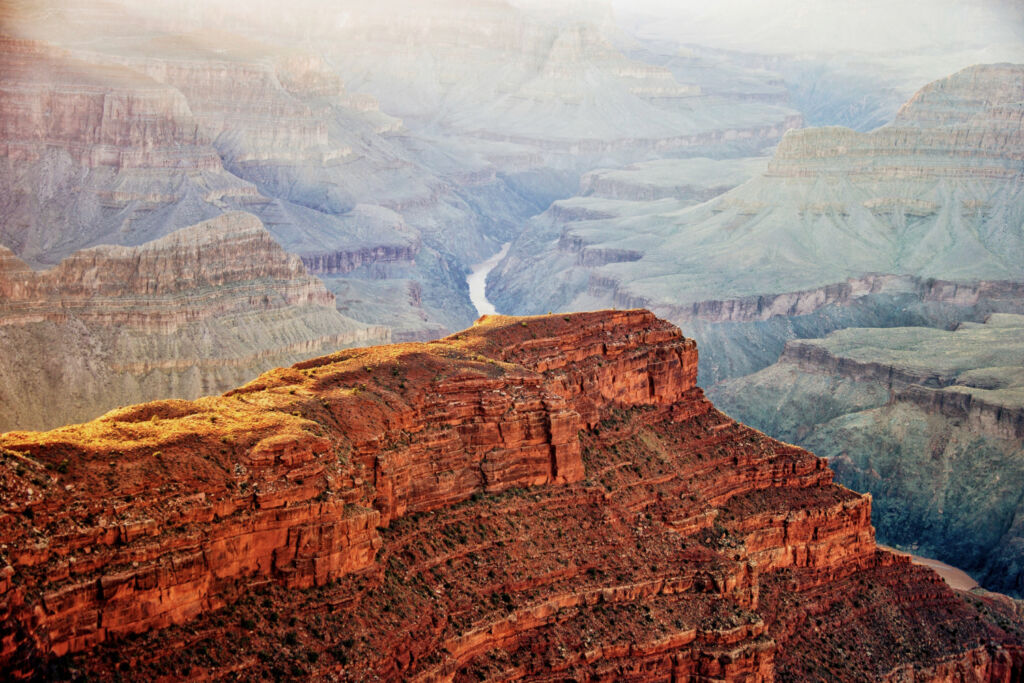
These stunning formations showcase the beauty and intricate details that sedimentary processes can create.
The facts about sedimentary rocks demonstrate the interconnectedness of geology, history, and our everyday lives. Whether in fossils, fuels, or majestic landscapes, sedimentary rocks offer an enduring testament to the dynamic forces of our planet.
Sedimentary Rocks and Our World
Sedimentary rocks aren’t just about Earth’s ancient past; they play a surprisingly significant role in our modern lives. These layered rocks profoundly connect to our world, fueling our society and shaping iconic landscapes.
Resources: Oil, Gas, and More
- Energy powerhouses: Many sedimentary rocks are porous and have tiny spaces. These act like reservoirs for valuable resources like oil and natural gas, formed from the remains of ancient organisms.
- Essential building blocks: Sedimentary rocks like limestone and sandstone are crucial for construction materials – buildings, pavements, and more.
- Groundwater sources: Certain sedimentary rocks, especially sandstone, are aquifers. They store vast amounts of underground water that we rely on for drinking and agriculture.
Responsible stewardship of sedimentary resources is crucial for a sustainable future.
Revealing Past Climates and Environments
- Snapshots of the past: The types of sediments, fossils, and even chemical signatures within sedimentary layers reveal incredible details about ancient environments and climates.
- Understanding climate change: Studying ancient sedimentary records helps scientists understand long-term patterns of climate change, providing context for today’s environmental challenges.
Sedimentary rocks are like puzzle pieces, helping us reconstruct the story of life and landscapes on Earth over millions of years.
Building Materials and Landmarks
- Ancient architects: Limestone, famously used in the pyramids of Egypt, and sandstone, seen in countless structures, have been valued for their durability for centuries.
- Sculpted wonders: Sedimentary rocks form some of the world’s most breathtaking natural wonders, like the Grand Canyon, showcasing the power of erosion and deposition.
The unique properties of different sedimentary rocks influence how they weather and erode, leading to a remarkable diversity of forms seen in landscapes.
From essential resources to iconic landmarks, the impact of sedimentary rocks is undeniable. Learning more facts about sedimentary rocks fosters a deeper appreciation for how geology shapes our lives.
Fun Facts About Sedimentary Rocks: Did You Know?
Sedimentary rocks cover much of Earth’s surface but hold some shocking secrets!
Sedimentary Rocks can be found on Mars!
- Beyond Earth: Scientists studying images from rovers have discovered sedimentary rock formations on Mars.
- What it means: These Martian rocks suggest that liquid water once flowed on the Red Planet, a clue in the search for ancient Martian life.
Some Limestone is made of tiny fossils
- Seashells galore: Limestone often forms from the accumulated shells and skeletons of marine organisms that lived millions of years ago.
- Famous example: The White Cliffs of Dover in England are made of chalk, a soft type of limestone composed of microscopic marine fossils.
Colorful sedimentary formations create stunning landscapes
- Nature’s artwork: Different minerals and weathering create vibrant bands of color in sedimentary rocks.
- Famous places: Think the Painted Desert in Arizona or the layered red rocks of the Grand Canyon, all formed by sedimentary processes.
Studying Sedimentary Rocks for Clues About Climate Change
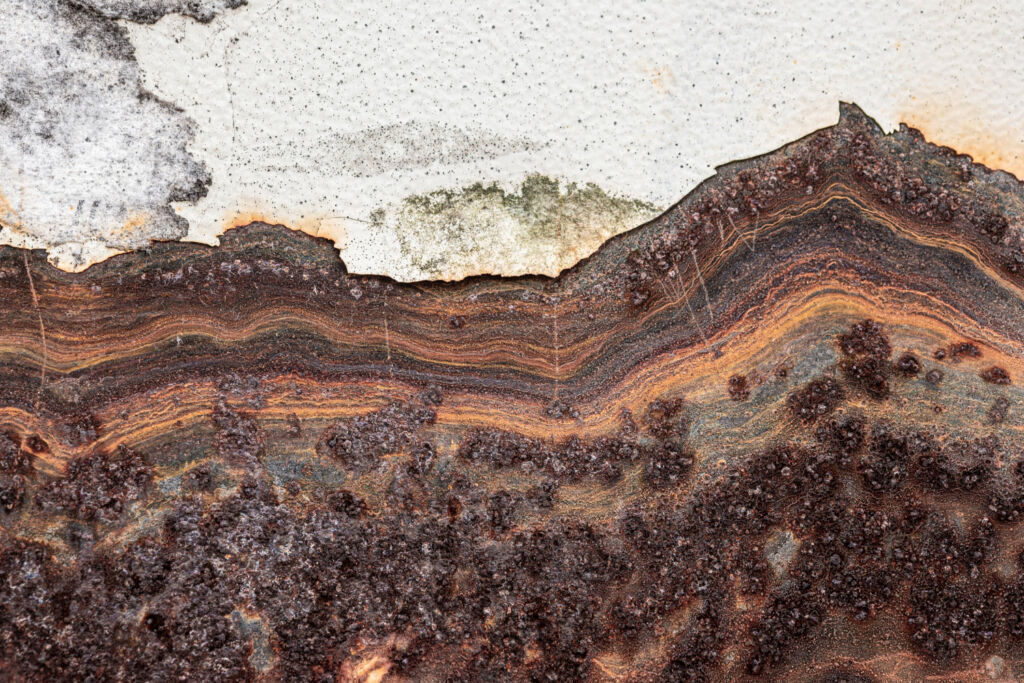
- Records of the past: The types of fossils, minerals, and the layering in sedimentary rocks offer clues about past climates – warm oceans, icy periods, and more.
- Understanding our future: This information helps scientists model how Earth’s climate might change in the future, which is especially important today.
Conclusion
Sedimentary rocks might seem like static records of the past, but their story never truly ends. The forces that created them are still at work today. Mountains rise only to be weathered away, forming new sediments. Rivers shift, and seashores change, giving way to fresh layers of future rock.
Some sedimentary rocks are buried deep beneath the Earth’s surface. Heat and pressure transform them into metamorphic rocks. Should those rocks later be uplifted and exposed, the cycle starts anew.
This continuous process is a reminder of our planet’s dynamism. Studying facts about sedimentary rocks is not only a journey into the past but also offers insights into how the Earth might continue to change. Each layer is a page in an epic tale of transformation that continues to be written.
Understanding facts about sedimentary rocks helps us appreciate the grand cycles of our planet and the interconnectedness of its history.

